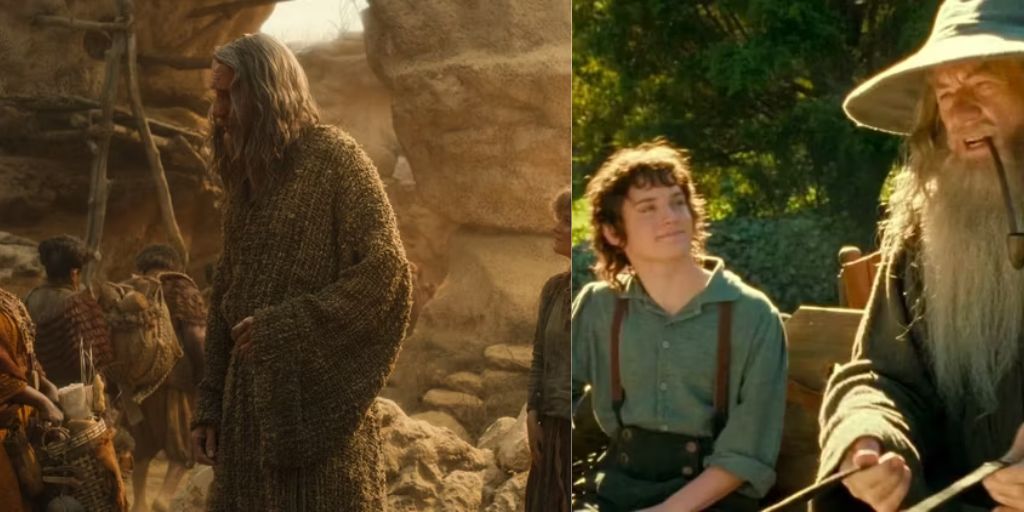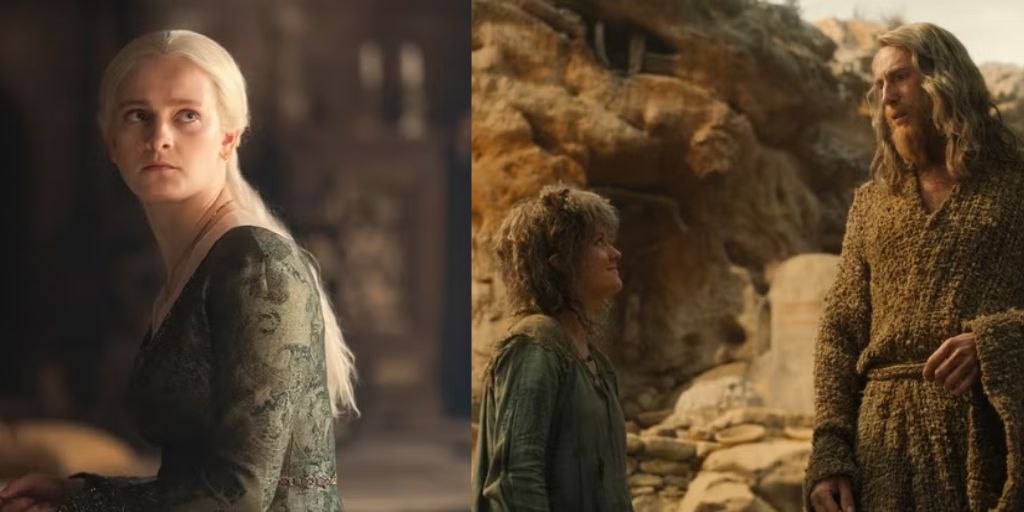The Lord of the Rings: The Rings of Power has been renewed for a third season, and it promises big changes for the story. The announcement confirms that the timeline will move forward by several years, bringing the series to the peak of the War of the Elves and Sauron.
It is important to understand where this war fits into the Second Age of Middle-earth because it can be confusing for fans who are only familiar with Peter Jackson’s The Lord of the Rings trilogy.
The War of the Elves and Sauron Is Not the Same as the Battle in The Fellowship of the Ring
The opening prologue of The Lord of the Rings: The Fellowship of the Ring is one of the most memorable parts of the film. It tells the story of how Elves and Men joined forces to fight Sauron in a massive battle at Mount Doom. This final battle of the Second Age led to Sauron’s defeat and the loss of the One Ring. However, the war in The Rings of Power Season 3 is not the same one from that prologue.
The battle seen in The Fellowship of the Ring is part of the War of the Last Alliance, which took place near the end of the Second Age. This war happened between the years 3429 and 3441, and it was one of the bloodiest conflicts in Middle-earth’s history. It shaped the events of the Third Age, setting the stage for the world seen in The Lord of the Rings.
The War of the Elves and Sauron, however, took place much earlier, between 1693 and 1701 of the Second Age. It was mainly fought between the Elves and Sauron’s forces. The first and most important battle of this war was the Sack of Eregion, which was partially shown in The Rings of Power Season 2. However, the way the series presents this battle is different from Tolkien’s books.
How the War of the Elves and Sauron Started
In the original story, Sauron deceived the Elves by pretending to be an emissary of the Valar named Annatar. Under this disguise, he helped them forge powerful rings, including the Nine Rings for Men and the Seven Rings for the Dwarves. The Elves later created the Three Rings for themselves, but they did this without Sauron’s involvement. Meanwhile, Sauron secretly forged the One Ring in Mordor.
When Sauron put on the One Ring for the first time, he became aware of the Three Elven Rings because of their magical connection. At the same time, the Elves immediately sensed his deception.
Realizing that he intended to control them, they removed their rings to prevent falling under his power. Furious, Sauron launched an invasion of Eriador, attacking the Elven kingdom of Eregion, where he believed all the rings were kept.
During this attack, Sauron captured the Elven smith Celebrimbor and tortured him to learn the location of the rings. Celebrimbor revealed the locations of the Nine and the Seven, but he refused to reveal where the Three had been sent. Before he died, he had secretly sent the Three Rings to Lindon, where they were kept safe by Gil-galad, Círdan, and Galadriel.
The War’s Impact on Middle-earth
The fall of Eregion caused significant changes across Middle-earth. Elrond failed to defend Eregion, and Sauron’s army overwhelmed the Elves. The Dwarves of Khazad-dûm eventually arrived to help push back Sauron’s forces, but the battle had already caused great destruction.
As a result, Elrond led the survivors to a hidden valley, where he founded Rivendell as a safe refuge for the Elves. Meanwhile, Gil-galad remained in Lindon, but the war was far from over. Sauron’s forces continued to spread across Eriador, isolating both Lindon and Rivendell.
The situation only changed when the Numenóreans arrived to help the Elves. In the year 1700, King Tar-Minastir led Númenor’s army against Sauron, defeating his forces and driving them back to Mordor. By 1701, the war had ended, and Sauron’s influence had weakened.
At this point in history, relations between the Elves and Númenor were still strong. However, in the following years, Númenor became more powerful and ambitious. Its rulers started believing they could conquer Valinor, the land of the Valar, which ultimately led to their downfall.
Númenor’s invasion attempt failed, and the island was swallowed by the sea. Only a few survivors managed to escape and later founded the kingdoms of Arnor and Gondor in Middle-earth.
How Season 3 Will Change the Story
In Tolkien’s timeline, the War of the Elves and Sauron took place around the middle of the Second Age, long before Númenor’s final king, Ar-Pharazôn, came to power. However, The Rings of Power has already introduced Ar-Pharazôn and shown that relations between Númenor and the Elves are strained.
Ar-Pharazôn has made it clear that he resents the Elves because the Valar favored them. This means that, in the show’s timeline, Númenor’s aid to the Elves might not happen the way it did in the books.
The series might use Sauron’s invasion of Eriador to set up Númenor’s eventual downfall. Instead of simply helping the Elves, Ar-Pharazôn might see this war as an opportunity to gain more power. He could use the war as a way to rally support for his own plans, convincing his people that Númenor is strong enough to challenge the Valar.

Another possibility is that Númenor’s involvement in the war could lead them to discover the Nine Rings for Men. If Ar-Pharazôn and Sauron make a deal, Númenor might receive the Nine Rings in exchange for letting Sauron return to Mordor. This could explain how Sauron later manipulates Ar-Pharazôn and eventually gains control over Númenor before its destruction.
Why These Changes Matter
The Rings of Power has made many changes to Tolkien’s original story. Some fans believe these changes make the series feel like a different story, while others think they help create a more connected and dramatic narrative.
Tolkien’s writings left several gaps in the Second Age’s history, and the series has been trying to fill those gaps with new details. While Season 3 will not follow the books exactly, it will likely continue expanding on the Second Age in a way that ties different events together.
The War of the Elves and Sauron is a major turning point in Middle-earth’s history. It sets up many of the events that happen later, including the fall of Númenor, the War of the Last Alliance, and the eventual rise of The Lord of the Rings. The Rings of Power Season 3 will give viewers a chance to see this war play out on screen, even if it takes some creative liberties along the way.
Both seasons of The Lord of the Rings: The Rings of Power are available to stream on Prime Video.
Also Read: Who Is Durin IV’s Brother in ‘The Rings of Power’ and What Does His Rivalry Mean for Khazad-dûm?










